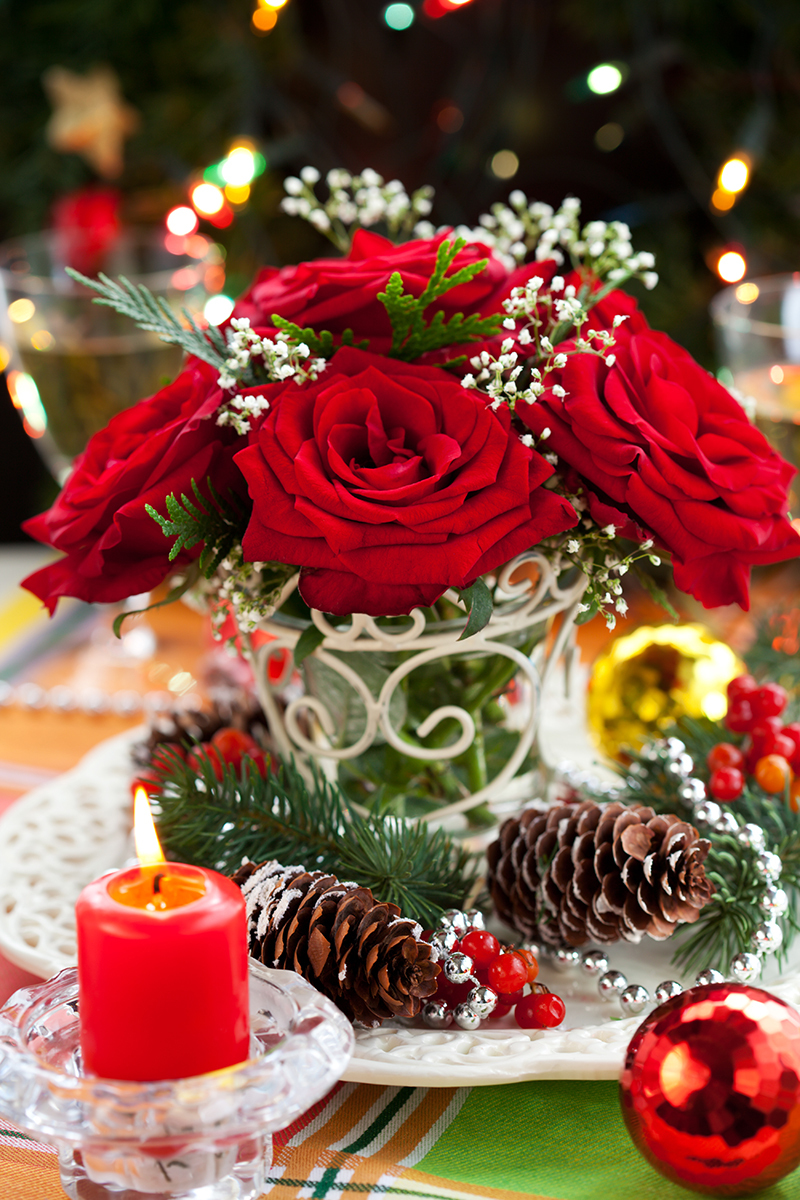The Ultimate Guide: The Do's and Don'ts of Cut Flower Maintenance
There's nothing quite like the fresh beauty and vibrant color that a bouquet of freshly cut flowers brings to your home or office. Whether they are a token of love, gratitude, or a simple treat to yourself, cut flowers delight all the senses. However, to keep them looking their best for as long as possible, it's vital to master the art of cut flower maintenance.
In this comprehensive guide, we'll explore the essential do's and don'ts of cut flower maintenance--from the moment you receive or purchase flowers, to daily care and beyond. Discover how to keep your flower arrangements fresher, prevent wilting, and maximize vase life with expert tips and tricks.

Do's of Cut Flower Care
1. Choose Fresh Flowers Carefully
- Inspect petals and leaves: Opt for blooms with unblemished, vibrant petals and healthy-looking foliage.
- Check the stems: Stems should be firm, green and not slimy or brown at the bottom.
- Buy flowers still in bud: For longer enjoyment and vase life, select flowers that are just about to open.
2. Trim the Stems
- Use sharp, clean scissors or a knife: This helps ensure a smooth cut and prevents stem damage.
- Cut at an angle: A 45-degree angle increases surface area so stems absorb more water.
- Re-cut before arranging: Always cut 1-2 inches off the bottom of each stem immediately before placing them in water, even if you just brought them home.
3. Remove Lower Leaves
- Remove leaves that will sit below the water line: This prevents rot and bacterial growth, keeping water cleaner.
- Keep upper leaves and blooms intact: Retain leaves at the top of the stem for a fuller arrangement and healthy photosynthesis.
4. Use Clean Vase and Fresh Water
- Wash the vase with soap and water: Rinse thoroughly to remove bacteria that can shorten vase life.
- Fill with room temperature water: Avoid hot water, which can shock most flower varieties (except for certain flowers like tulips, which prefer cold water).
5. Add Flower Food
- Utilize commercial flower food packets: These contain balanced nutrients, a biocide, and acidifiers for optimal flower longevity.
- Dissolve food fully: Stir water well to ensure powder is completely dissolved before adding stems.
6. Change Water Regularly
- Replace water every 2-3 days: Clean water keeps bacteria and odor at bay and refreshes your flowers.
- Trim stems each time you change the water: A fresh cut helps the flowers absorb water better.
7. Place in the Right Environment
- Keep arrangements away from direct sunlight: Excess heat shortens flower vase life.
- Avoid drafts and heat sources: Position away from heating vents, appliances, and open windows.
- Keep flowers away from ripening fruit: Ethylene gas from fruit can speed up petal drop and wilting.
Don'ts of Cut Flower Maintenance
1. Don't Skip Stem Trimming
- Never place flowers in the vase without a fresh cut: Dried ends seal off and prevent water uptake--always trim before arranging.
2. Don't Leave Foliage Underwater
- Submerged leaves decompose: This increases bacteria, causes foul smells, and leads to cloudy water.
3. Don't Overcrowd the Vase
- Overcrowded stems restrict water flow: Give each stem room to breathe for maximum longevity and a stunning display.
4. Don't Forget to Replenish Water
- Flowers are thirsty: Keep an eye on the water level and replenish as needed so stems are always immersed.
5. Don't Forget to Remove Wilting Flowers
- Wilting or dead blooms produce ethylene gas: This causes nearby flowers to age and deteriorate faster--remove them promptly.
6. Don't Place Flowers Near Fruit, Smoke, or Exhaust
- These release harmful gases: Keep bouquets away from sources of ethylene, cigarette smoke, and car exhaust for extended freshness.
7. Don't Use Dirty Tools or Vases
- Unclean equipment harbors bacteria: Always use sterile scissors, knives, and vases for all cut flower maintenance tasks.
Common Mistakes in Cut Flower Care and How to Avoid Them
Even the most well-intentioned flower fan can make minor errors that reduce the beauty and vase life of their arrangements. Below are some frequent cut flower care blunders and practical tips to rectify them:
- Mistake: Only trimming stems once.
Fix: Re-cut stems every two days for best water absorption. - Mistake: Leaving the same water in the vase for a week.
Fix: Replace water every 2-3 days, and clean the vase before refilling. - Mistake: Placing flowers near heat, sun, or electronics.
Fix: Display arrangements in cool, shaded areas instead. - Mistake: Ignoring the importance of flower food.
Fix: Always use the supplied flower food or make your own natural preservative at home.
Advanced Tips for Prolonging Vase Life
DIY Flower Food Recipe
If you don't have commercial flower food, you can mix your own using common household items. Try this DIY recipe:
- 1 quart water
- 2 tablespoons lemon juice
- 1 tablespoon sugar
- 1/2 teaspoon household bleach
Mix thoroughly and use in place of store-bought packets. The sugar feeds the flowers, lemon juice stabilizes pH, and the bleach helps keep bacteria in check.
Conditioning Flowers Before Arranging
- Let flowers sit in a bucket of room temperature water in a cool, dark place for several hours before final arrangement. This "conditions" them for maximum vase life.
- Some flowers benefit from special treatment. For example, woody stems (like roses and hydrangeas) can be split or crushed at the ends to improve water absorption. Consult care instructions for your specific flower varieties when available.
Mist Flower Maintenance Myths
Rumor and tradition abound when it comes to cut flower maintenance. Here are some common myths debunked by science:
- Myth: Placing aspirin in the water makes flowers last longer.
Reality: While aspirin may lower pH, it's not as effective as commercial or DIY flower food and can actually damage some stem types. - Myth: Adding pennies to the vase keeps water clear.
Reality: Newer pennies don't contain enough copper to act as an anti-bacterial; use bleach instead. - Myth: Sugar alone is enough to preserve flowers.
Reality: Sugar feeds microbes without a biocide, actually hastening stem decay unless combined with an anti-bacterial.
Specific Cut Flower Care: Popular Varieties
Roses:
- Remove guard petals on the outside for a fuller, cleaner appearance.
- Use lukewarm water for initial hydration.
- Always remove all leaves under the water line to prevent rot.
Tulips:
- Stand straight in cold water for several hours to firm stems.
- Keep away from fruit and bright light--tulips are sensitive to ethylene gas and heat.
- Expect them to "grow" in the vase and possibly stretch, so leave some headroom.
Hydrangeas:
- Crush or split the bottom inch of woody stems for better water intake.
- Mist flower heads daily to prevent drooping.
Lilies:
- Remove pollen-laden anthers to prevent staining petals and furniture.
- Display in cool rooms for maximum lifespan.
Sunflowers:
- Change water daily--sunflowers are prone to bacterial growth.
- Use a tall, sturdy vase to support heavy blooms.

Frequently Asked Questions About Cut Flower Maintenance
- Can I revive wilted flowers?
Yes! Try re-cutting stems and placing them in hot water for 30 seconds, then move to fresh, cool water. This "shocks" air bubbles out and helps revive drooping blooms. - Is sugar necessary for every cut flower?
No, not all cut flowers benefit from sugar. Native wildflowers or greenery may do better in plain, conditioned water with a small amount of bleach for bacteria control. - How can I stop flowers from making water cloudy?
Always remove below-water leaves, change the water often, use a biocide (bleach or vinegar), and keep the vase clean. Also, remove old flowers as soon as they wilt.
Conclusion: Becoming a Cut Flower Maintenance Pro
With careful attention to these do's and don'ts of cut flower maintenance, anyone can extend the beauty and enjoyment of their fresh flower arrangements. The right combination of stem care, water quality, and appropriate environment makes all the difference between a bouquet that fades quickly and one that stays delightful for days or even weeks.
Remember: Change water regularly, trim stems often, use clean tools, and remove dying blooms. With practice and care, your cut flowers will always look vibrant, healthy, and breathtakingly beautiful.
Happy flower arranging!

